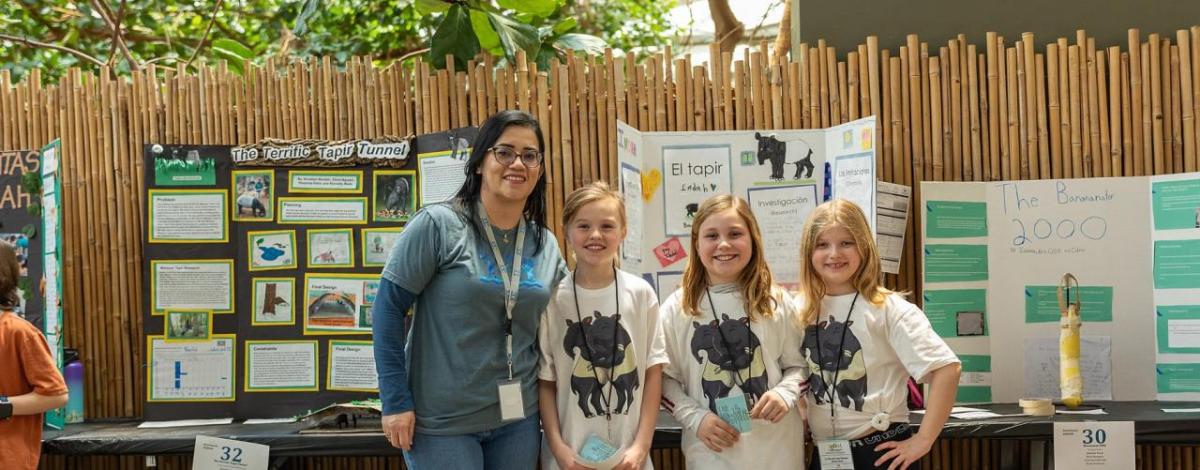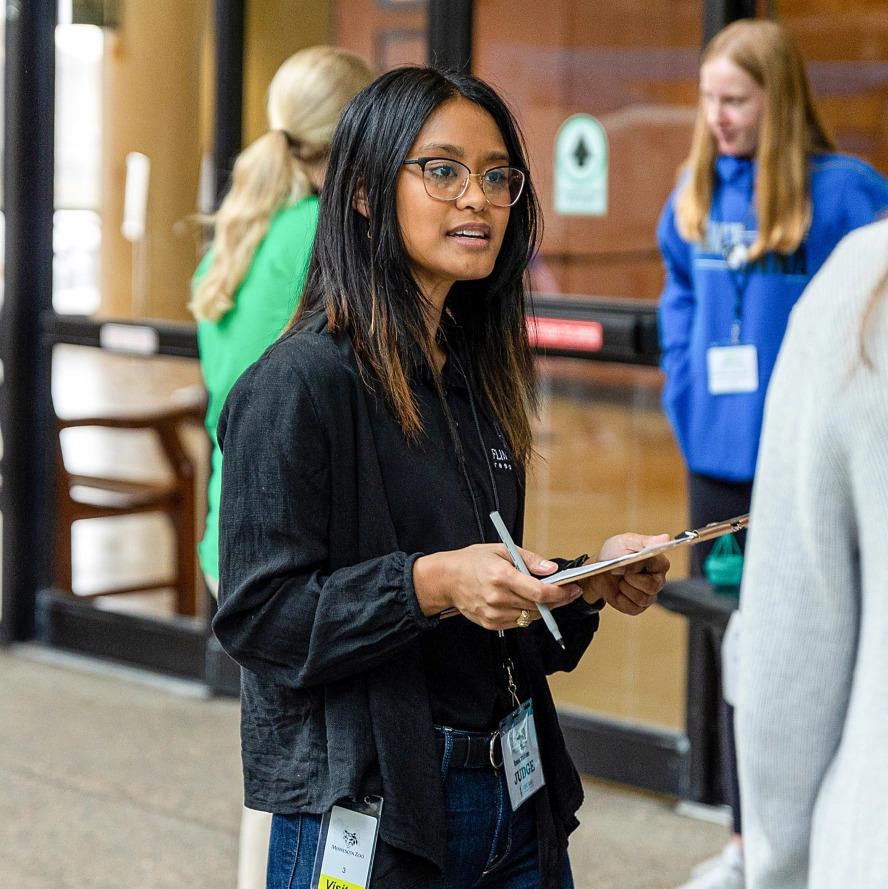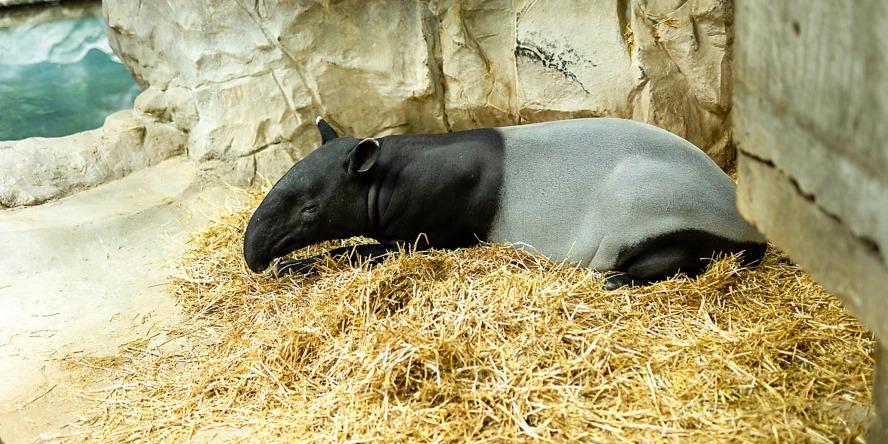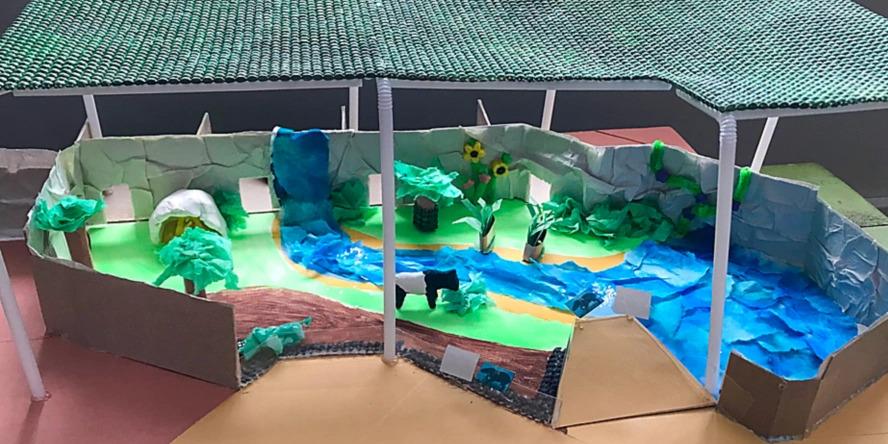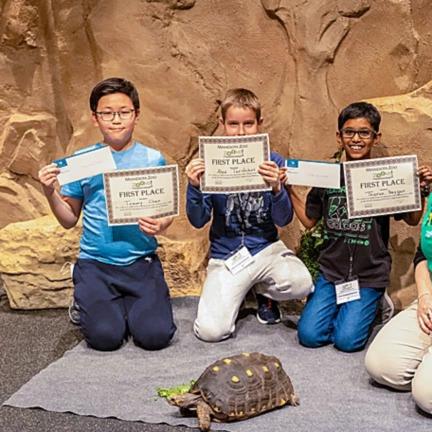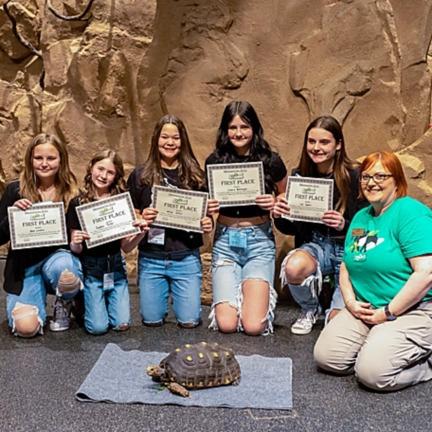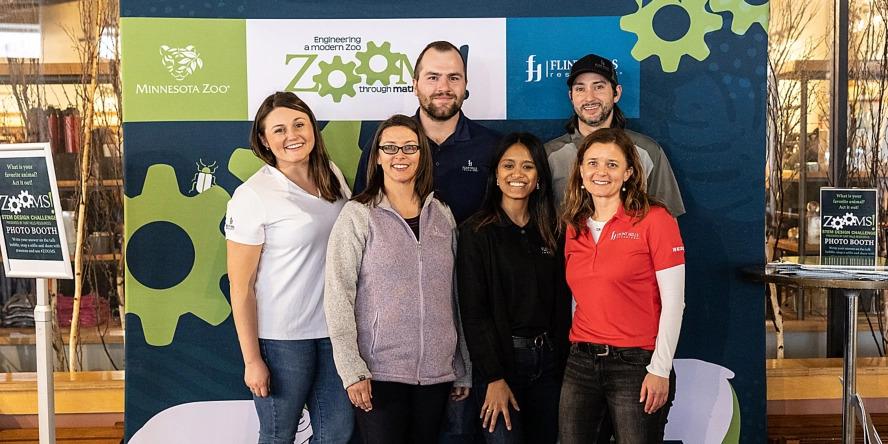Zoom, Zoom: Students Use STEM Skills To Improve Zoo Habitats for Design Challenge
Boasting record participation, the 9th annual program at the Minnesota Zoo inspired young people and Flint Hills Resources volunteers.
Ricci Seguban prioritizes making a difference. It’s something she strives for every day as a process safety engineer at the Flint Hills Resources Pine Bend refinery — and why she volunteers with the ZOOMS STEM Design Challenge, an annual program for kids at the Minnesota Zoo.
Charged with finding new ways to manage on-the-job risks throughout the 5,000-acre Flint Hills facility in Rosemount, Minnesota, Ricci spends much of her time talking with colleagues about how they work. The safety and well-being of employees and the surrounding community is priority number one for Ricci and the facility. Her job, she says, is making sure Pine Bend’s more than 1,000 employees leave each day in the same shape as when they arrived.
“My career path isn’t typical for someone with a chemical engineering background,” she says. “But I find a lot of personal fulfillment when I do things that have an impact on people’s lives. That’s what drew me to safety in the first place.”
It’s also what inspired her to sign up for the ZOOMS program in the last three years. Supported and significantly expanded by Flint Hills, ZOOMS invites students to learn more about a specific zoo animal — the endangered Malayan tapir this year — then create detailed designs that reimagine or enrich its exhibit space. A record-breaking 5,200 students in grades three through 12 participated in the 2022–23 challenge, most from Minnesota and some from as far away as Australia.
When several hundred of those students presented their work at the Minnesota Zoo during the ninth annual ZOOMS exhibition week in early March, Ricci was among 20 Flint Hills team members serving as judges. The event, a sort of tapir-themed science fair, featured more than 260 projects. They spanned the gamut from poster-board-mounted drawings to detailed 3D models, including a few constructed entirely from recycled household items and one, by a team from Zimmerman Middle School from Zimmerman, Minnesota, envisioning the tapir habitat as a “resort.” That design included a spa-like river (Malayan tapirs love to swim) lined with cushioned flooring because the 500-pound mammals have sensitive feet. And it earned its creators one of this year’s five Flint Hills Innovation Awards, given for outstanding designs that demonstrate creative problem-solving.
“It’s amazing to see the ideas students come up with,” Ricci says. “You want to help them keep that creativity alive as they get older. Coming up with innovative solutions is something that’s going to be helpful for them in any career.”
This year she was pleased to hear students praise ZOOMS for showing them how skills they learn in the classroom, such as research, critical thinking and problem-solving, can also be applied to real-world problems.
“One team said they now see how the engineering design process can even be used by someone with a career at the zoo,” she says.
That ZOOMS helps students use their math, science and problem-solving skills to address real-life issues has made it a hit among teachers, while kids, of course, are drawn to the cool critters.
“I’ve had former students tell me this project is one of the fondest memories they have of STEM,” says Dawn Coats, STEM specialist at Lakeview Elementary School in Lakeville, Minnesota, where third-grade students have been participating in ZOOMS since 2019.
Studying animals is part of the third-grade science curriculum and adding this STEM-skills-driven challenge to the equation “takes their learning to the next level,” she says.
When creating their projects, the students even practice a kid-friendly version of the engineering design process (identifying a problem, brainstorming solutions, making a plan and adjusting it along the way).
“They care so much about the animals and work hard to create something especially for them,” Dawn says.
Those connections created between young people and animals are an important aspect of ZOOMS, and line up well with the zoo’s mission.
“We want to inspire an interest in STEM and conservation to help students see why STEM knowledge and skills are necessary in the real world,” says Minnesota Zoo STEM specialist Kristi Berg. “We are so incredibly grateful to have Flint Hills Resources partner with us for this program and especially lucky to get to have their engineers connect with students and provide expert feedback. It makes the ZOOMS Design Challenge an even more authentic learning experience for these kids.”
Ricci is aware that her feedback, and her very presence as a woman engineer, can affect these students in defining ways.
“A diverse group of kids and a lot of girls compete in ZOOMS, so it’s important for them to see role models they can relate to,” she says. “Especially when it comes to science, technology, engineering and math (STEM) careers: How can we help them learn more about the opportunities and options? If they see someone who looks like them in an engineering role, they may have the confidence to say, ‘Hey, I can do it, too.’” That’s how it worked for her, anyway. Born just outside Dallas and raised in Gig Harbor, Washington, Ricci was a good student who enjoyed math and science. But she didn’t fully embrace those subjects until seventh grade when she was encouraged to join the mostly male robotics club by the science teacher who was its faculty adviser.
“Seeing a female teacher getting involved in STEM activities made me feel like I could join in,” Ricci says.
Ricci learned about ZOOMS — and volunteered for the program — while she was working for a different Koch company before she moved into her role with Flint Hills in 2021. She's also taken on a leadership role with the refinery’s employee-led Women’s Network Group and its efforts to promote diverse perspectives in her field of expertise.
“Koch really supports volunteerism and connecting with the community,” she says. “We try to connect what we’ve learned in our careers, and what we see in the work we do, to the students that we work with.”
For Ricci, the rewards of community service stick around long after events like the ZOOMS challenge end. She returns to work feeling inspired and even more inclined to think about problems in new ways. Ricci also takes pride in knowing she’s encouraged the next generation to follow their STEM dreams, just like she did.
“Having the chance to impact students, seeing how the challenge motivates them — I take that satisfaction back into my own career,” she says. “I feel like we’ve achieved something wonderful.”

